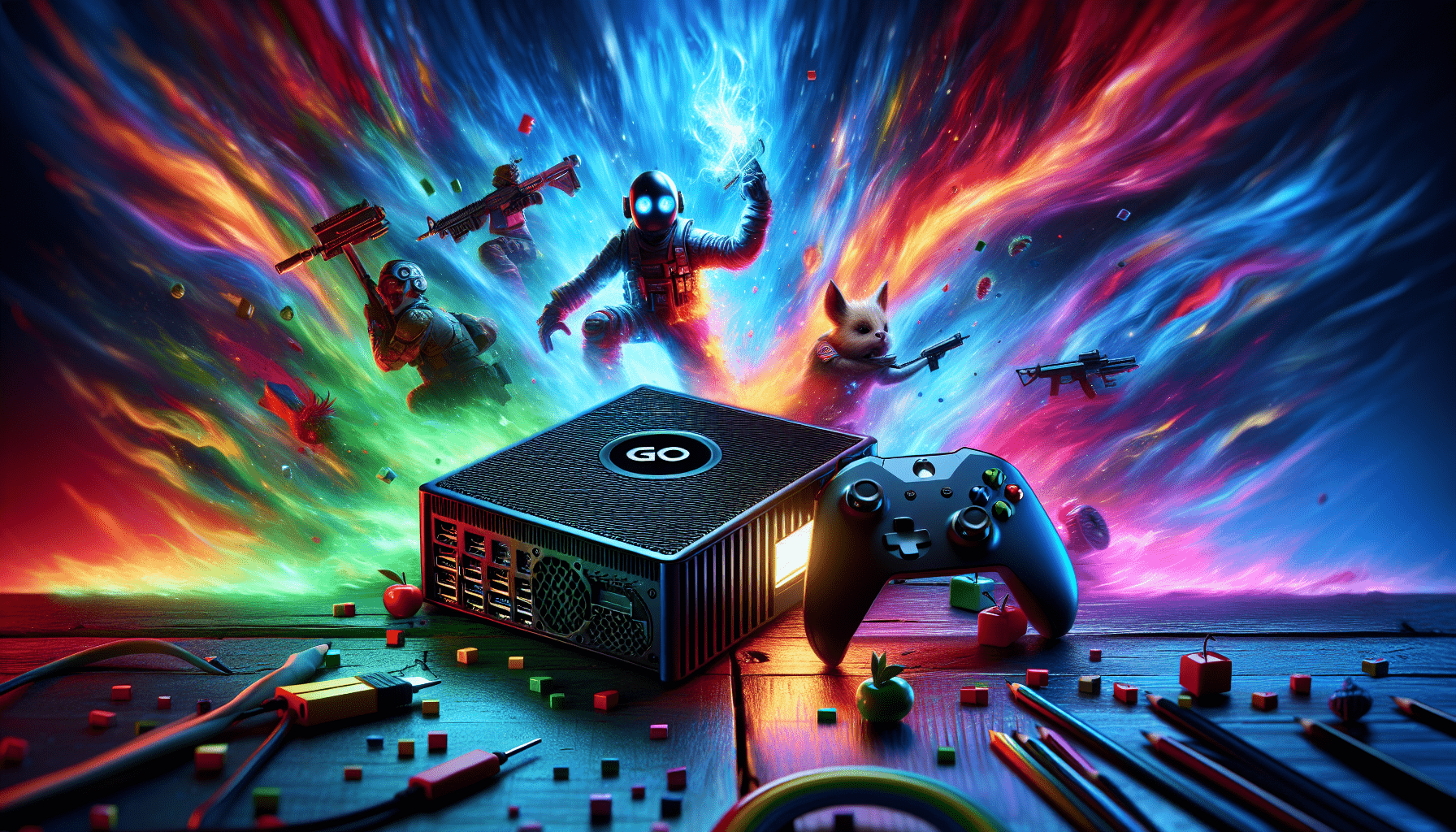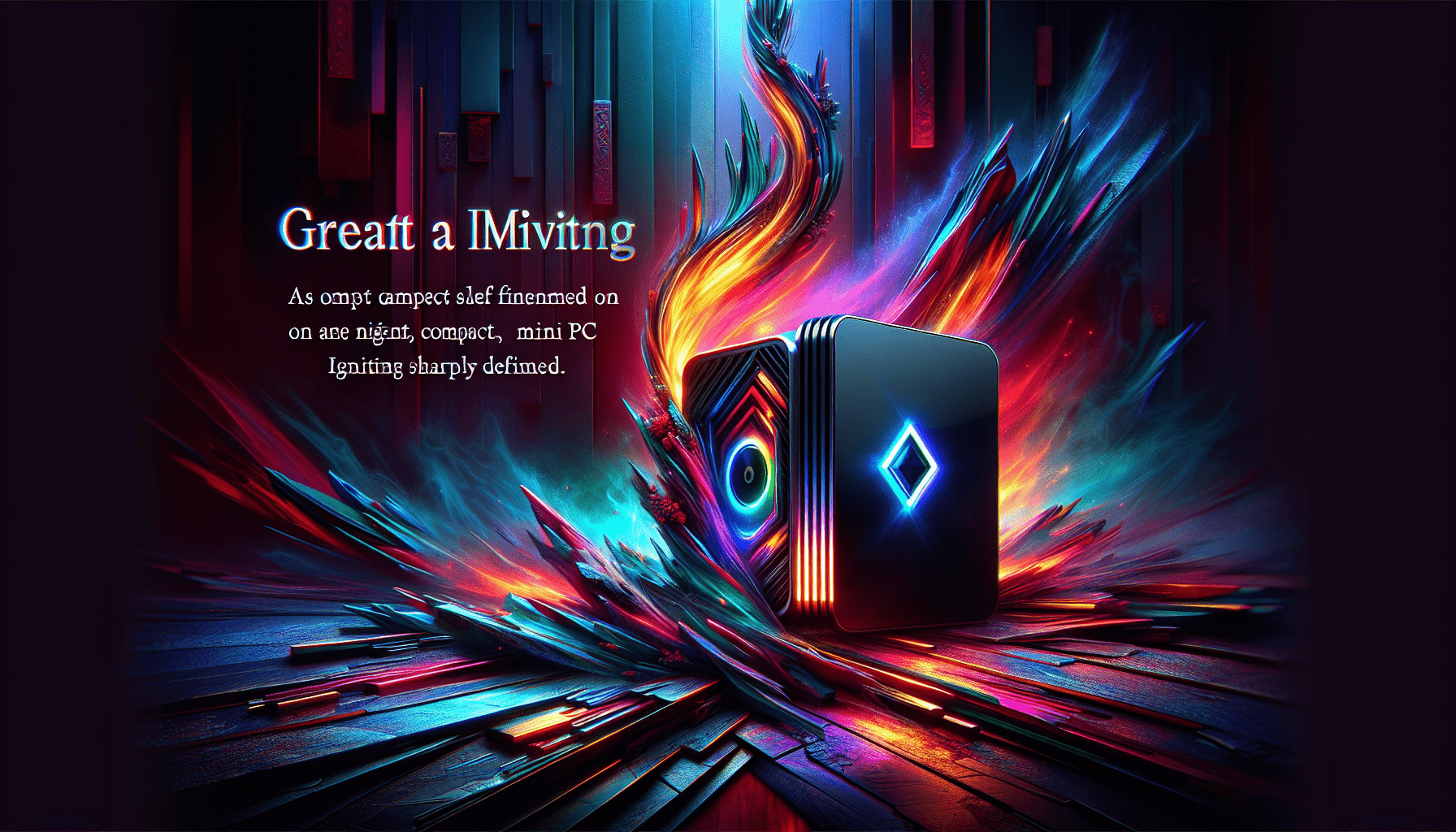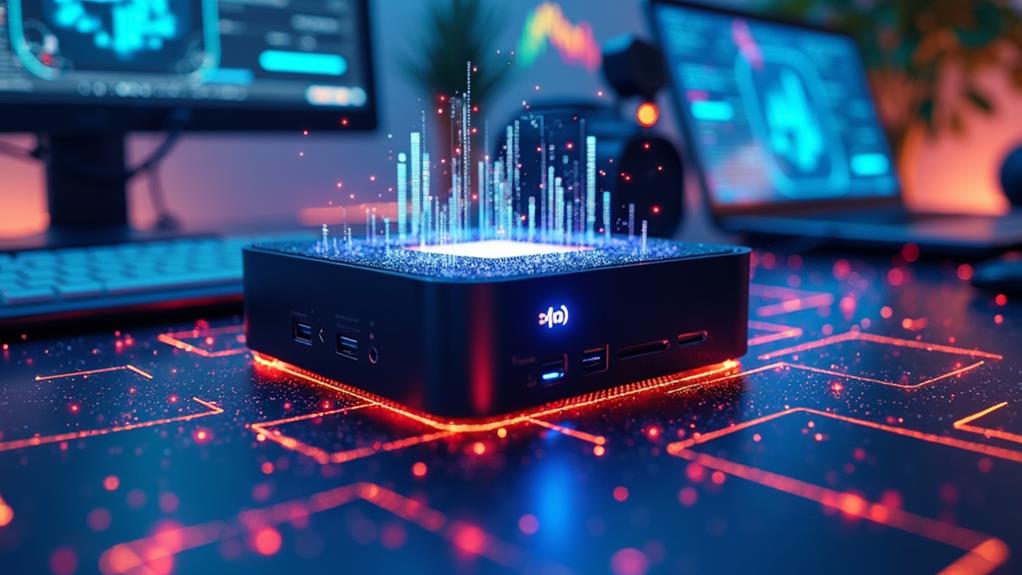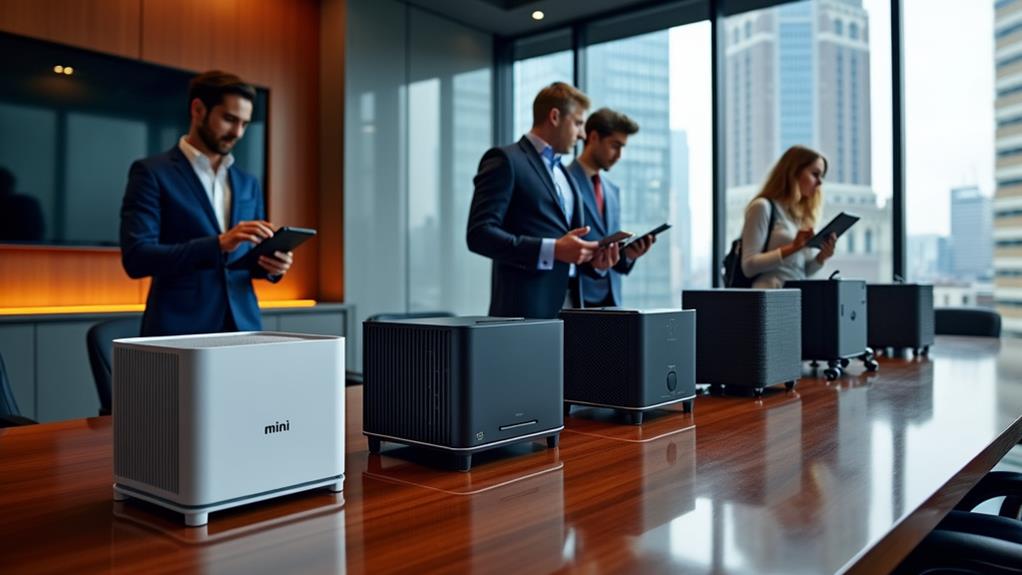



Are you ready to level up your gaming experience on a smaller scale? In this article, we will explore the exciting world of gaming on a mini PC. With its compact size and impressive capabilities, you might be surprised to find out just how much gaming power can be packed into these tiny devices. Get ready to discover a whole new gaming experience as we delve into the possibilities of gaming on a mini PC.
Hardware Requirements
Minimum specifications
When it comes to gaming on a mini PC, it’s important to consider the minimum hardware specifications. While mini PCs may not have the same power as their larger desktop counterparts, they can still pack a punch when equipped with the right components. Generally, a minimum of a quad-core processor, 8GB of RAM, and a dedicated graphics card are recommended for a satisfactory gaming experience. However, it’s worth noting that these are the bare minimum requirements and for more demanding games, higher specifications may be necessary.
Graphics card options
Graphics card options are essential for ensuring smooth gameplay and visually stunning graphics. While most mini PCs come with integrated graphics, which can be suitable for casual gaming and older titles, dedicated graphics cards are recommended for hardcore gamers. Popular options include the NVIDIA GeForce GTX and RTX series or the AMD Radeon RX series. These graphics cards offer excellent performance and are capable of handling most modern games without any issues.
RAM and storage considerations
RAM and storage are vital factors to consider when gaming on a mini PC. It’s recommended to have a minimum of 8GB of RAM to ensure smooth multitasking and optimal game performance. Additionally, the type and speed of the RAM can also impact gaming capabilities. As for storage, it’s best to opt for a solid-state drive (SSD) rather than a traditional hard disk drive (HDD) for faster load times and improved overall performance. Aim for at least 256GB of storage, but consider higher capacities if you plan to install several games or multimedia files.
Operating Systems
Windows
Windows is the most commonly used operating system for gaming, and it is fully compatible with mini PCs. The vast majority of games are designed to run on Windows, making it the go-to choice for gamers. Windows 10 is the latest version, offering improved performance, DirectX 12 support, and a user-friendly interface. With Windows, you’ll have access to a wide range of game titles and exclusive features like Xbox Game Pass.
Linux
Linux is a free and open-source operating system that offers a different gaming experience compared to Windows. While it may not have as extensive a library of games, Linux does have a growing selection of titles that are compatible with the OS. It can be a great choice for gamers who prefer a more customizable and lightweight system. Popular Linux distributions for gaming include Ubuntu and SteamOS.
SteamOS
SteamOS is a Linux-based operating system developed by Valve Corporation specifically for gaming. It is optimized for running games from the popular digital game distribution platform, Steam. SteamOS provides a console-like experience and offers features like Big Picture Mode for seamless gaming on a TV or monitor. While the game library for SteamOS may be more limited than Windows, it is continuously expanding, and many popular titles are compatible.

Gaming Performance
Benchmarking mini PCs
Benchmarking is essential for evaluating the gaming performance of a mini PC. It involves running specific tests and simulations to measure the system’s capabilities and compare them to other devices. There are various benchmarking tools available, such as 3DMark and PassMark, which assess factors like graphical fidelity, frame rates, and overall system strength. By benchmarking a mini PC, you can better understand its limitations and determine if it can handle the type of games you wish to play.
Comparing performance to desktop PCs
While mini PCs may not match the raw power of their desktop PC counterparts, they can still deliver impressive gaming performance. Modern mini PCs equipped with powerful processors and dedicated graphics cards can handle most games with ease. However, it’s important to keep in mind that some of the most demanding games may require lower graphics settings or compromises in terms of resolution to maintain smooth gameplay. If you’re a casual gamer or focus on less demanding titles, a mini PC can provide an excellent gaming experience.
Optimizing game settings
Optimizing game settings is crucial for achieving the best performance on a mini PC. Most games offer various graphical settings that can be adjusted to balance performance and visual quality. It’s often beneficial to lower settings like anti-aliasing, shadows, and reflections to boost frame rates without significantly sacrificing graphics. Additionally, tweaking settings like resolution and screen scaling can help achieve a smoother gameplay experience. Experimenting with different settings and finding the right balance can greatly enhance gaming performance on a mini PC.
Game Compatibility
Supported game titles
Most modern games are designed to be compatible with a wide range of hardware specifications, making them playable on mini PCs. Popular titles like Fortnite, League of Legends, and Minecraft can be enjoyed without any issues on a well-equipped mini PC. However, it’s essential to check the specific hardware requirements of each game, as some highly demanding and graphically intensive titles may not be suitable for mini PCs. Online platforms like Steam often provide detailed information on a game’s compatibility.
Compatibility issues and workarounds
While mini PCs can handle a vast number of games, there may be instances where compatibility issues arise. This can be due to specific hardware limitations or software conflicts. It’s essential to research and identify potential compatibility issues before purchasing or playing a game on a mini PC. In some cases, there may be workarounds available, such as community-created patches or modifications. Gaming forums and communities can be valuable resources for finding solutions to compatibility issues.
Emulation options
Emulation allows gamers to play older console games on their mini PCs. With the use of emulators, which mimic the hardware and software of consoles, games from platforms like the PlayStation, Nintendo, or Sega can be enjoyed. Emulation can breathe new life into classic games and provide a nostalgic experience. However, it’s important to ensure that the emulation is legal and respects copyright laws. Emulation also requires some technical know-how and may require additional configuration.

Peripheral Support
Keyboard and mouse
Most mini PCs support standard USB or Bluetooth keyboards and mice, providing the flexibility to choose peripherals that suit personal preferences. Whether you prefer a mechanical keyboard, a gaming mouse with programmable buttons, or a wireless setup, mini PCs can accommodate a wide range of keyboard and mouse options. These peripherals are essential for precise control and comfortable gameplay, whether you’re playing fast-paced shooters, strategy games, or MMOs.
Controllers and gamepads
Many gamers prefer using controllers or gamepads for a more console-like experience. Most mini PCs have built-in support for popular controllers like Xbox or PlayStation controllers. Connecting these controllers is as simple as plugging them in via USB or using Bluetooth connectivity. Additionally, there are also numerous third-party gamepads and controllers available that offer a variety of features and customization options. Mini PCs can provide a seamless gaming experience, whether you’re leaning back on the couch or sitting at your desk.
Virtual reality (VR) accessories
If you’re interested in delving into the immersive world of virtual reality gaming, mini PCs can handle the task. VR accessories, such as headsets and controllers, can be connected to a mini PC to enjoy virtual reality experiences. Oculus Rift, HTC Vive, and Windows Mixed Reality headsets are some of the popular options available. It’s important to ensure that the mini PC meets the recommended specifications for the VR system to ensure smooth and lag-free gameplay.
Connectivity Options
Ethernet and Wi-Fi
Connectivity options are vital for online gaming and seamless multiplayer experiences. Mini PCs usually come equipped with both Ethernet and Wi-Fi capabilities, offering flexibility in connecting to the internet. Ethernet provides a stable and reliable connection, ideal for competitive gaming or large file downloads. Wi-Fi, on the other hand, allows for greater mobility and flexibility, making it convenient for gaming in different locations or connecting to networks where Ethernet isn’t available.
Bluetooth connectivity
Bluetooth connectivity is another essential feature for mini PCs, especially when it comes to peripherals such as controllers, headsets, or wireless keyboards and mice. Many modern mini PCs come equipped with Bluetooth capabilities, allowing for easy pairing and use of these wireless devices. Bluetooth also enables connectivity with other external devices like smartphones or tablets, expanding the possibilities for gaming and multimedia experiences.
External display ports
When it comes to connecting your mini PC to an external display, it’s important to consider the available ports. Most mini PCs come equipped with HDMI ports, which can connect to TVs or monitors that support HDMI input. Additionally, other display ports like DisplayPort or VGA may also be included, depending on the model. It’s essential to check the compatibility and available ports on both the mini PC and the chosen external display to ensure a seamless connection.
Thermal Management
Effective cooling solutions
With the compact nature of mini PCs, effective cooling solutions are crucial to prevent overheating. Some mini PCs are equipped with built-in cooling systems, such as fans or heat sinks, to dissipate heat efficiently. However, additional cooling measures may be necessary, especially during intense gaming sessions. This could involve using external cooling pads, improving airflow in the surrounding area, or even investing in liquid cooling systems for more advanced setups. Proper cooling can help maintain optimal performance and prolong the lifespan of a mini PC.
Overheating prevention
Overheating prevention is key to ensuring the longevity and stability of a mini PC while gaming. In addition to effective cooling solutions, there are several steps you can take to prevent overheating. Keeping the mini PC in a well-ventilated area, away from heat sources, and ensuring dust and debris are regularly cleaned from the components can greatly reduce the risk of overheating. Additionally, monitoring the internal temperatures using software or hardware tools can help identify potential issues before they cause damage.
Optimizing airflow in confined spaces
Given their small form factor, mini PCs often have limited space for airflow. Optimizing the airflow within the case can significantly improve cooling efficiency. Strategically placing fans or ensuring proper alignment of internal components can help in achieving better airflow. Cable management can also play a role by minimizing obstructions to the airflow. Lastly, using high-quality thermal paste when installing or upgrading components can assist in transferring heat more effectively. By optimizing airflow, you can mitigate the risk of overheating and maintain stable performance.
Upgradability and Expandability
Adding more storage
Mini PCs, like their larger counterparts, often provide options for adding additional storage. With increasing game sizes and the need for multimedia files, expanding storage can be a worthwhile investment. Mini PCs usually offer extra slots for adding solid-state drives (SSDs) or traditional hard disk drives (HDDs). Additionally, external storage devices like USB thumb drives or external hard drives can also be connected to mini PCs for additional storage. Ensuring sufficient storage capacity allows for an uninterrupted gaming experience without having to compromise on game installations or content.
Upgrading RAM or graphics card
Upgrading RAM or the graphics card can significantly enhance gaming performance on a mini PC. While mini PCs may not offer the same level of upgradability as larger desktop PCs, many models do allow for RAM and graphics card upgrades. Increasing the RAM capacity or opting for faster memory can improve multitasking and overall system performance. Similarly, upgrading to a more powerful graphics card can handle more demanding games and offer higher graphical settings.
Compatible peripherals and accessories
Mini PCs are compatible with a wide range of peripherals and accessories that can enhance the gaming experience further. Whether it’s a high-quality gaming monitor, a gaming headset with immersive sound, or gaming-specific peripherals like racing wheels or flight joysticks, mini PCs can cater to various preferences. It’s important to ensure compatibility with the chosen peripherals and accessories to avoid any potential issues or limitations. Mini PCs can offer a versatile gaming setup, tailored to individual needs.
Software optimization
Removing bloatware
Many mini PCs come preloaded with bloatware or unnecessary software that can slow down system performance. Removing these unnecessary programs can free up system resources, resulting in improved gaming performance. It’s recommended to review the installed software and uninstall any applications that are not required for gaming or day-to-day use. Keeping the system clean from bloatware ensures a smoother gaming experience and maximizes the resources available for running games.
Updating drivers
Regularly updating drivers is crucial for optimal gaming performance on a mini PC. Graphics card drivers, in particular, play a significant role in delivering smooth gameplay and supporting new game releases. The manufacturers of graphics cards, as well as other hardware components, often release driver updates that address bugs, enhance performance, and improve compatibility. It’s advisable to regularly check for driver updates and install them to ensure you’re getting the best possible gaming experience on your mini PC.
Utilizing optimization software
Optimization software can be a useful tool for fine-tuning a mini PC’s performance. These software programs can analyze the system, identify areas for improvement, and make adjustments to enhance gaming performance. They can optimize system settings, manage background processes, and prioritize resources to ensure the best possible gaming experience. However, it’s important to choose reputable optimization software and exercise caution when using them, as some programs may have unintended consequences or conflicts with other software.
Cost Considerations
Price comparison to traditional gaming PCs
One of the primary advantages of mini PCs is their affordability compared to traditional gaming PCs. Mini PCs often offer a compact and cost-effective alternative without compromising on performance. While high-end mini PCs with cutting-edge components can be expensive, there are budget-friendly options available that can handle a wide range of games. As technology continues to advance, mini PCs are becoming more powerful and affordable, making them an attractive option for gamers on a budget.
Evaluating value for money
When considering a mini PC for gaming, it’s important to evaluate the value for money. Factors to consider include the performance capabilities, build quality, included components, and features offered by the mini PC. Comparing different models and their specifications, reading reviews, and assessing the reputation of the manufacturer can aid in determining the value of a mini PC. It’s essential to strike a balance between the features and performance you require and the price you are willing to pay.
Long-term cost implications
Besides the initial cost of the mini PC, it’s important to consider the long-term cost implications. This includes factors such as energy consumption, maintenance, potential upgrades, and the lifespan of the mini PC. Energy-efficient components and optimized power settings can help minimize energy costs over time. Additionally, the ease of upgrading or replacing components can affect the long-term lifespan and functionality of the mini PC. Considering these aspects can help determine the overall cost-effectiveness of a mini PC for gaming in the long run.
In conclusion, gaming on a mini PC is indeed possible and can provide an enjoyable gaming experience, especially for casual to moderate gamers. While mini PCs may not match the raw power or upgradability of larger desktop PCs, they offer a compact and affordable alternative. With the right hardware specifications, operating system, software optimization, and thoughtful consideration of connectivity, cooling, and storage options, gamers can achieve satisfying performance and gameplay on a mini PC. It’s important to research and select a mini PC that meets your specific gaming needs, taking into account factors such as compatibility, long-term cost, and value for money. Whether you’re playing the latest AAA titles or revisiting classic games, a well-configured mini PC can provide a convenient and capable gaming platform.
Disclosure: As an Amazon Associate, I earn from qualifying purchases.







